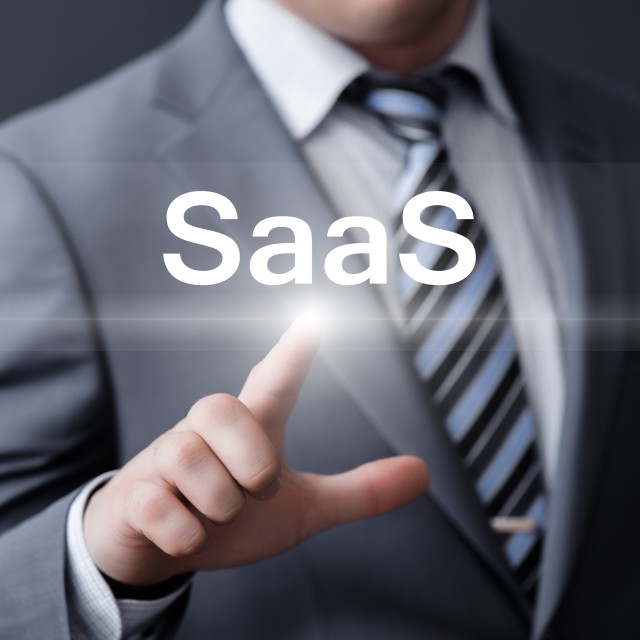Securing your SaaS applications: Best practices in a cloud-native era

Software as a Service (SaaS) has emerged as a cornerstone for organizations seeking flexibility, scalability, and efficiency in their operations. With the convenience of accessing applications over the internet, SaaS adoption has surged, offering unparalleled opportunities for innovation and growth. According to recent data, the global SaaS market is projected to reach $282.20 billion this year, reflecting the growing reliance on cloud-based software solutions. However, alongside these benefits come inherent security challenges that necessitate a proactive approach to risk management.
The widespread shift to remote work and the rapid adoption of cloud-based solutions, including SaaS applications, have introduced significant security challenges for organizations.
One of the primary challenges stems from the decentralized nature of remote work environments. Traditional security measures often rely on a well-defined network boundary, making it easier to monitor and control data flow. However, with employees scattered and accessing data from various locations, this perimeter evaporates. This dispersed landscape makes it significantly more difficult for security teams to effectively monitor activity, identify potential threats, and safeguard sensitive information.
Unlike traditional on-premises software, SaaS applications are constantly evolving, with features and permissions frequently updated. This constant state of flux makes it challenging for organizations to maintain consistent visibility and control over data access and usage. Thus, it’s crucial for organizations to establish a trusted relationship with their SaaS provider to ensure that any significant changes do not create a gap that threat actors can exploit.
These challenges are further complicated by the concept of a shared security model in SaaS environments. While SaaS providers are responsible for the foundational security of their applications, there is a blurred and often forgotten line of responsibility where the client must take ownership of security measures. This means that simply adopting a SaaS solution does not guarantee complete security.
Hackers, capitalizing on the expanded attack surface and recognizing the weaknesses inherent in remote work setups and cloud-based solutions, are increasingly targeting SaaS environments to exploit vulnerabilities and gain unauthorized access to sensitive information. Most CISOs who are charged with protecting their data in a SaaS environment can share stories of the number of times that the environment is probed for weakness by bad actors.
A Holistic Approach to Strengthening SaaS Security
In response to these challenges, organizations must adopt a proactive approach to SaaS security. Rather than solely focusing on pre-deployment measures, such as code review and testing, security teams must also direct their attention towards post-deployment monitoring and response strategies. By shifting the focus from traditional security paradigms to a holistic, lifecycle approach, organizations can better fortify their defenses against evolving threats in SaaS environments.
To address the challenges of decentralized work environments and constantly evolving SaaS applications, organizations should prioritize four key actions.
- Comprehensive Inventory Management: Organizations should start by creating a comprehensive inventory of all SaaS applications in use across the enterprise. This inventory should include details such as the application's purpose, the data it accesses or processes, and the users who have access to it. Implementing robust access controls, such as Single Sign-On (SSO) and multi-factor authentication (MFA), can help mitigate the risk of unauthorized access. SSO ensures that users only need to authenticate once to access multiple applications, reducing the risk of credential theft. MFA adds an extra layer of security by requiring users to verify their identity using multiple factors, such as a password and a one-time code sent to their mobile device.
- Implement Basic Security Controls: Organizations should prioritize basic security measures to minimize the risk of data breaches resulting from misconfigurations or social engineering attacks. Regular audits of access permissions and configurations can help identify and remediate vulnerabilities before they are exploited by attackers. Web Application Firewalls (WAFs) should also be deployed to protect against Distributed Denial of Service (DDoS) attacks by monitoring and filtering malicious traffic. WAFs can be configured with Access Control Lists (ACL) to restrict access to the application to only approved IP addresses or authenticated users. This adds an extra layer of security by ensuring that only authorized entities can interact with the application. Additionally, implementing security awareness training for employees can help reduce the risk of falling victim to social engineering attacks, such as phishing or pretexting.
- Red Team Exercises and Pentests: Proactively assessing the effectiveness of security controls is essential for identifying and mitigating potential vulnerabilities. Red team exercises simulate real-world cyberattacks to test the organization's security posture and incident response capabilities. Penetration tests, or pentests, focus on identifying vulnerabilities in the organization's infrastructure, applications, and APIs. By conducting these exercises regularly, organizations can identify and remediate vulnerabilities before they are exploited by attackers. If the SaaS vendor does not allow pentests , then a review of the providers pentest results could provide the evidence of security, assuming that they are conducted by a qualified third-party assessor.
- Vendor Selection and Risk Management: When selecting SaaS vendors, organizations should exercise due diligence to ensure that the vendor's security controls, incident response capabilities, and disaster recovery procedures align with organizational security objectives. This includes conducting thorough security assessments of the vendor's infrastructure and processes and evaluating their track record in handling security incidents. Additionally, organizations should establish clear risk management processes for evaluating and mitigating the risks associated with using third-party SaaS applications. This may include establishing contractual agreements that define security responsibilities and obligations and regularly monitoring and auditing the vendor's security practices.
Securing the Future of SaaS
As organizations embrace the opportunities presented by SaaS in a cloud-native era, prioritizing security is paramount to mitigate risks and safeguard against potential threats. By adopting a proactive and comprehensive approach to SaaS security, organizations can ensure the confidentiality, integrity, and availability of their data assets in an increasingly interconnected digital landscape.
Photo credit: Alexander Supertramp / Shutterstock
Kevin Kirkwood is Deputy CISO, LogRhythm.
